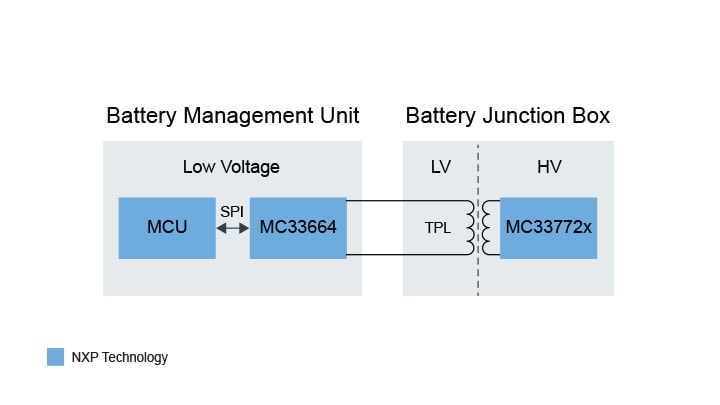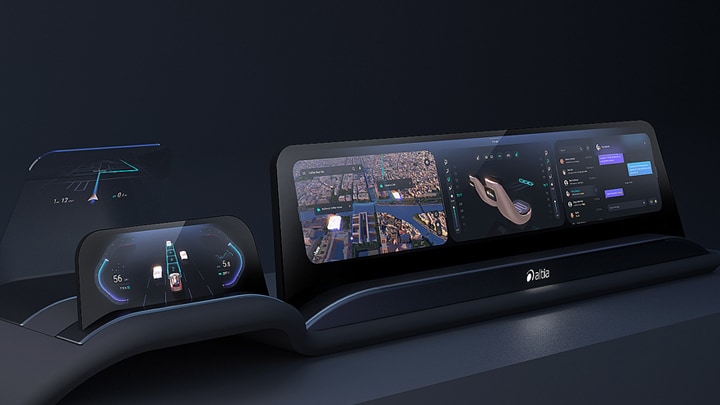The rapid rollout of electric vehicles (EV) is accelerating innovation in
battery technology, including battery management semiconductors. One key
aspect of this is integration, which can offer benefits in terms of ease of
design, safety and performance. New advances in this area can go a long way in
helping to maximize the potential of EV batteries, without compromising
battery health and safety.
Safeguarding Safety and Efficiency
EV batteries can fail for a variety of reasons. Mechanical stress or damage
following a crash can puncture the battery pack or impair individual cells.
Electrical stress, such as over-charging, can also lead to safety issues and
reduce the overall battery life.
The battery management system (BMS) helps monitor critical battery
parameters for a safe and efficient operation of the EV battery. One of its
main functions is to ensure that every Li-Ion cell within the battery pack
operates within its safe operating area (SOA) defined by voltage, current and
temperature. Operating outside the SOA can result in severe consequences, such
as permanent damage to the battery or, worse still, thermal runaway. Helping
to keep the battery in safe conditions, the battery junction box (BJB) in
particular, is important.
 NXP car charging, keeping the battery safe.
NXP car charging, keeping the battery safe.
Battery Junction Box Plays a Key Role in the Battery System
The
battery junction box (BJB)
is a key element of the BMS. Depending on the architecture, it measures the
total battery voltage in addition to the charge and discharge current, the
latter allowing a precise calculation of the battery’s state of charge (SOC).
This enables a more precise range estimation, letting the driver know how many
kilometers are left in the battery. It also fulfils safety functions like
overcurrent detection as well as contactor and isolation monitoring. In
automotive applications, the BJB needs to support up to automotive safety
integrity level (ASIL) D on various functions including current and voltage
measurements.
One challenge for communication in high-voltage systems is the isolation of
low voltage semiconductors from the high voltage battery side. As a standalone
module, communication with the
battery management unit (BMU)
is usually over CAN bus, requiring an onboard microcontroller with embedded
software. Integrating the BJB via TPL daisy chain communication bus can be an
attractive alternative here. The TPL interface is designed specifically for
BMS to comply with automotive EMC and EMI standards while supporting low-cost
transformer or capacitive isolation. Furthermore, it also implements specific
measures that facilitate the synchronization between cell voltages and pack
current measurements. When connecting the BJB via TPL, the result is reduced
complexity associated with local software and a lower bill of material (BOM)
cost.
 As a standalone module, the BJB needs an onboard MCU with its own software.
As a standalone module, the BJB needs an onboard MCU with its own software.
 By using the grey channel for communication, the intelligence is in the BMU
rather than the BJB.
By using the grey channel for communication, the intelligence is in the BMU
rather than the BJB.
Communication in the Functional Safety Context
Safe communication between cell monitoring ICs and the BJB ICs is enabled by
end-to-end protection between the individual devices and the safety MCU.
Functional safety communication can be achieved using a grey channel approach.
In the context of the SW-free BJB, this refers to a non-safety critical
communication line between the two modules BJB and BMU which are regarded as
safety-critical. To achieve an ASIL rating at the system level, you need to
ensure no data manipulation throughout the communication path. Data is secured
on the origin and decoded at the destination. What happens during the data's
journey can be ignored because you can always detect errors since the data was
secured at the origin and not manipulated.
Integrated Solutions Help Save Time and Cost
Newly emerging semiconductors that specifically target the BJB application
integrate all the required functions in one single device. One example, the
MC33772CTC
from NXP, provides precise current sensing from milliamps to kiloamps with
coulomb counting.
The device offers multiple advanced voltage and temperature measurement
functions as well as comprehensive diagnostics that simplify the BJB
application. For direct connection to an MCU in a standalone module, it also
supports standard SPI communication. When using the TPL interface, up to 63
nodes can be connected in the same daisy chain, offering the option to connect
the cell monitoring analog front ends as well. However the communication
architecture is planned, the device enables end-to-end protection with the
functional safety MCU and therefore supports the grey channel approach.
Additional diagnostics and functional safety features include detecting
internal and external faults like open lines, shorts and leakages. The robust
AEC Q-100 compliant device supports ISO 26262 with up to ASIL D capability on
system level.
 MMC33772CTC Block diagram: Battery Junction Box Controller IC.
MMC33772CTC Block diagram: Battery Junction Box Controller IC.
Moving the intelligence from the BJB to the BMU is a simplification in design.
This reduces time-to-market and the associated development costs at Tier 1s
and OEMs while improving range, safety and battery lifetime, accelerating the
transition to CO2 emission free transportation.
Development boards are already available, get started on your next design with
battery management systems (BMS) hardware solutions.








